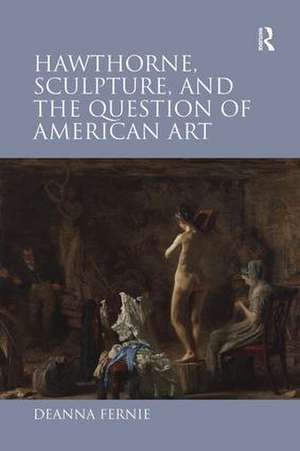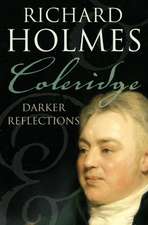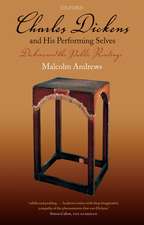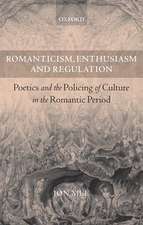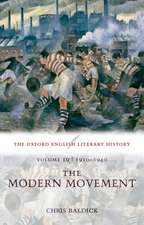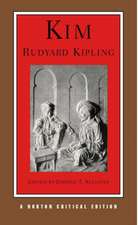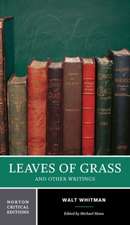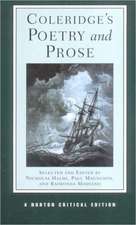Hawthorne, Sculpture, and the Question of American Art
Autor Deanna Fernieen Limba Engleză Hardback – 28 apr 2011
| Toate formatele și edițiile | Preț | Express |
|---|---|---|
| Paperback (1) | 261.73 lei 6-8 săpt. | |
| Taylor & Francis – 14 oct 2024 | 261.73 lei 6-8 săpt. | |
| Hardback (1) | 1061.81 lei 6-8 săpt. | |
| Taylor & Francis – 28 apr 2011 | 1061.81 lei 6-8 săpt. |
Preț: 1061.81 lei
Preț vechi: 1294.89 lei
-18% Nou
Puncte Express: 1593
Preț estimativ în valută:
203.18€ • 221.39$ • 171.21£
203.18€ • 221.39$ • 171.21£
Carte tipărită la comandă
Livrare economică 23 aprilie-07 mai
Preluare comenzi: 021 569.72.76
Specificații
ISBN-13: 9780754654797
ISBN-10: 0754654796
Pagini: 294
Ilustrații: includes 24 b&w illustrations
Dimensiuni: 156 x 234 x 18 mm
Greutate: 0.66 kg
Ediția:1
Editura: Taylor & Francis
Colecția Routledge
Locul publicării:Oxford, United Kingdom
ISBN-10: 0754654796
Pagini: 294
Ilustrații: includes 24 b&w illustrations
Dimensiuni: 156 x 234 x 18 mm
Greutate: 0.66 kg
Ediția:1
Editura: Taylor & Francis
Colecția Routledge
Locul publicării:Oxford, United Kingdom
Public țintă
AcademicCuprins
Contents: Introduction: the chiseling pen; American Laokoon; Ruin or project?; An American Michelangelo; The shattered fountain; Donatello's bust; Epilogue: sculpting America; Works cited; Index.
Notă biografică
Dr Deanna Fernie is an independent scholar who has studied and taught on both sides of the Atlantic.
Recenzii
'Ambitious and original, Fernie’s work on Hawthorne throws into relief the crucial ways in which the development of sculpture and writing informed each other in early nineteenth-century America. As she explores Hawthorne’s use of sculpture to understand the representational limits of writing, she illuminates not only Hawthorne’s development as a writer, but also his understanding of America and its limits. Beautifully written, its deft use of literary theory and cultural history combines with a highly refined literary sensibility to produce a book that gives us a different Hawthorne than the one we may think we know.' Pamela Schirmeister, Yale University, USA
'Fernie's book offers ambitious, thickly researched, and valuable analyses of sculpture as both fact and analogue in Hawthorne's fiction. Her illuminating readings of Kenyon's unfinished bust of Donatello and the emerging figurehead in Drowne's Wooden Image, for example, provide provocative insights into Hawthorne's attitudes toward his own art, American artists, and the emerging country itself.' Rita K. Gollin, State University of New York, Geneseo, USA
'This well-written, multi-layered book, which deals both with the history and development of American art in relation to European traditions and with Hawthorne's appreciation of and quarrels with it, presents a clearly defined and careful argument as offered by Deanna Fernie... [she] has written a provocative and evocative book, rich with possibilities, clear in her careful arguments, and lavishly illustrated to prove her many points about sculpture and its uses in Hawthorne's fiction.' Cercles
'Fernie's book offers ambitious, thickly researched, and valuable analyses of sculpture as both fact and analogue in Hawthorne's fiction. Her illuminating readings of Kenyon's unfinished bust of Donatello and the emerging figurehead in Drowne's Wooden Image, for example, provide provocative insights into Hawthorne's attitudes toward his own art, American artists, and the emerging country itself.' Rita K. Gollin, State University of New York, Geneseo, USA
'This well-written, multi-layered book, which deals both with the history and development of American art in relation to European traditions and with Hawthorne's appreciation of and quarrels with it, presents a clearly defined and careful argument as offered by Deanna Fernie... [she] has written a provocative and evocative book, rich with possibilities, clear in her careful arguments, and lavishly illustrated to prove her many points about sculpture and its uses in Hawthorne's fiction.' Cercles
Descriere
Analyzing sculpture in Hawthorne's fiction through the recurring motif of the fragment, in its double guise as ruin and project, Deanna Fernie establishes the intellectual contexts for her study through a discussion of sculpture and fragmentary form as revealed in American, British, and Continental thought. Her book will be an important text not only for American literature scholars but also for anyone interested in British and Continental Romanticism and the intersections of art and literature.
